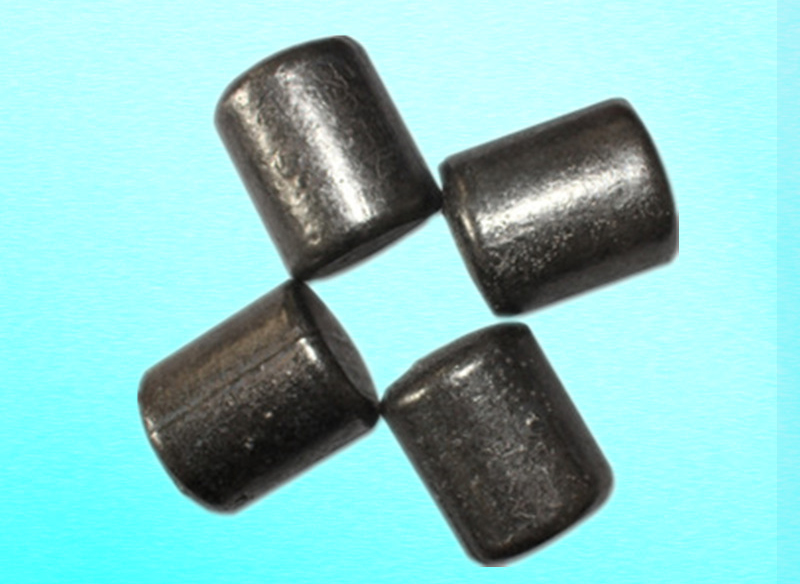Grinding Steel Forgings: The Efficient
In numerous industrial fields such as mineral mining, building materials production, and chemical processing, the grinding and refinement of materials is a crucial step to ensure the smooth progress of subsequent production processes and improve product quality. In this process, the selection of grinding media directly determines grinding efficiency, material purity, and production costs. Among them, grinding steel forgings, with their outstanding performance, have become the core supporting media for mainstream grinding equipment such as ball mills, providing important support for the efficient operation of industrial production.
I. What are Grinding Steel Forgings? — An Analysis of Definition and Core Processes
Grinding steel forgings are not ordinary steel components, but specialized grinding media processed through specific technological processes. They take high-quality alloy steel as raw material, undergo multiple heat treatment processes including blanking, forging, quenching, and tempering, and then the surface is treated through a precision grinding process. Finally, they form grinding products with regular shapes (commonly round or cylindrical), high hardness, and low impurities.
Among these processes, the precision grinding process is the core link that distinguishes grinding steel forgings from ordinary steel forgings. This process not only removes defects such as oxide layers and burrs on the surface of steel forgings but also controls the surface roughness to an extremely low level. It ensures that the steel forgings make uniform contact with materials during the grinding process and avoids local over-grinding or insufficient grinding caused by irregular surfaces. At the same time, the subsequent heat treatment processes (especially quenching + tempering) endow grinding steel forgings with excellent mechanical properties, making their internal structure more compact, with a hardness of up to HRC 58-62, which is sufficient to withstand long-term grinding impact and friction.
II. Core Characteristics of Grinding Steel Forgings — Why They Become the First Choice in Industrial Grinding
The reason why grinding steel forgings stand out among many grinding media lies in their four core characteristics, which perfectly meet the strict requirements of industrial grinding:
1. High Hardness and Super Wear Resistance, Reducing Loss Costs
After professional heat treatment and grinding processing, the surface hardness of grinding steel forgings is much higher than that of ordinary steel forgings, enabling them to easily cope with the grinding impact of hard materials such as ores and cement clinkers. In practical applications, their wear rate is usually controlled within 0.1% per thousand hours, which is far lower than the wear rate of more than 0.3% per thousand hours of ordinary steel forgings. This means that within the same production cycle, enterprises do not need to frequently supplement or replace grinding steel forgings, which not only reduces the downtime for maintenance but also significantly lowers the production costs caused by medium loss.
2. Low Impurities and High Compactness, Ensuring Material Purity
In industrial production, some fields (such as high-end ceramics and fine chemicals) have extremely high requirements for material purity. If the grinding media have impurity shedding, it is easy to contaminate the materials and affect the quality of the final products. Through raw material screening (selecting high-quality alloy steel with low sulfur and low phosphorus) and precision processing, grinding steel forgings effectively remove impurities and defects on the surface and inside, and the compactness of the internal structure is significantly improved. During the grinding process, there is almost no impurity shedding, which ensures the purity of the ground materials from the source and meets the requirements of high-purity production.
3. Regular Shape and Smooth Surface, Improving Grinding Efficiency and Uniformity
The shape of grinding steel forgings is strictly designed, mostly round or cylindrical, and the surface is smooth and flawless after precision grinding. This design allows the steel forgings to form uniform contact and collision with materials when operating in the ball mill, avoiding the "dead angle grinding" problem caused by the rough surface and irregular shape of ordinary steel forgings. At the same time, the smooth surface can also reduce the friction between the steel forgings and the ball mill liner. While reducing equipment loss, it makes the grinding energy more concentrated on the materials, resulting in more uniform material fineness and a 15%-20% increase in grinding efficiency.
4. Good Toughness, Avoiding Fracture Loss
Although the hardness is extremely high, grinding steel forgings do not sacrifice toughness. The reasonable heat treatment process improves the hardness while retaining a certain degree of toughness of the steel forgings, enabling them to withstand a certain degree of impact load without breaking during the grinding process. Compared with some grinding media with high brittleness (such as high-chromium cast iron balls), the fracture rate of grinding steel forgings is extremely low, which further reduces medium loss and ensures the continuity of the grinding process.
III. Application Scenarios of Grinding Steel Forgings — The "All-Round Grinding Medium" Covering Multiple Fields
With the above excellent characteristics, grinding steel forgings have a wide range of application scenarios, covering almost all industrial fields that require fine grinding, and have become an indispensable part of the production chain of many industries:
1. Mining Industry: The "Core Support" for Fine Grinding of Metal Ores
In the mining and processing of metal ores such as gold ores, copper ores, and iron ores, the ores need to go through processes such as rough grinding and fine grinding to separate useful minerals from gangue, providing pulp with qualified particle size for subsequent flotation and smelting processes. With its high wear resistance and uniform grinding capacity, grinding steel forgings can accurately control the ore particle size within the required range (usually with -200 mesh accounting for more than 80%), and will not contaminate the pulp due to impurity shedding, ensuring mineral processing efficiency and metal recovery rate.
2. Building Materials Industry: The "Guardian" of Cement and Ceramic Quality
In cement production, clinker needs to be ground together with gypsum, admixtures, and other materials to a certain fineness to ensure the strength and setting performance of cement. The high grinding efficiency and low wear rate of grinding steel forgings can ensure uniform cement fineness and avoid the problem of substandard cement strength caused by insufficient grinding. In ceramic production, the low-impurity characteristic of grinding steel forgings can effectively prevent material contamination, ensure the whiteness and appearance quality of ceramic products, and meet the production requirements of high-end ceramics.
3. Chemical Industry: The "Grinding Expert" for Fine Chemical Raw Materials
In the production of fine chemical products such as pigments, fillers, and catalysts, the particle size and uniformity of materials directly affect the performance of products (such as the tinting strength of pigments and the dispersibility of fillers). Grinding steel forgings can grind chemical raw materials to the micron or even nanometer level through precise grinding control without introducing impurities, ensuring stable product quality and meeting the high-precision requirements for material grinding in the fine chemical industry.
IV. Comparison Between Grinding Steel Forgings and Ordinary Steel Forgings — Advantages Are Obvious
To more clearly demonstrate the advantages of grinding steel forgings, we can compare them with ordinary steel forgings through the following table:
Comparison Dimension | Grinding Steel Forgings | Ordinary Steel Forgings |
Surface Quality | Smooth, no oxide layer, no burrs, high precision | With oxide scale, burrs, low precision |
Hardness (HRC) | 58-62 | 45-50 |
Wear Rate (% per thousand hours) | <0.1 | >0.3 |
Grinding Efficiency | High, uniform material fineness | Low, prone to over-grinding or uneven grinding |
Material Contamination Risk | Extremely low, no impurity shedding | Relatively high, surface oxide scale is easy to shed and contaminate materials |
Application Scenarios | Fine grinding with high requirements for material purity and fineness | Rough grinding with low requirements for grinding precision |
It can be seen from the comparison that whether in terms of surface quality, mechanical properties, grinding efficiency, or adaptability to application scenarios, grinding steel forgings are far superior to ordinary steel forgings and are the first-choice media for medium and high-end industrial grinding scenarios.
V. Development Trend of Grinding Steel Forgings — Moving Towards Higher Efficiency and More Environmental Protection
With the continuous improvement of industrial production requirements for efficiency, quality, and environmental protection, grinding steel forgings are also continuously upgrading and iterating. In the future, the development of grinding steel forgings will show two major trends:
On the one hand, material upgrading has become an important direction. Researchers will further improve the hardness and toughness of grinding steel forgings, reduce the wear rate, and extend their service life by optimizing the composition of alloy steel (such as adding rare earth elements and trace elements). On the other hand, process innovation will promote grinding steel forgings to develop in a more precise and environmentally friendly direction. For example, the use of intelligent grinding equipment to achieve precise control of surface precision; the introduction of green heat treatment processes to reduce energy consumption and pollutant emissions during production, in line with the requirements of industrial green development.
Conclusion
As an efficient "grinding tool" in the field of industrial grinding, grinding steel forgings provide strong support for the high-quality production of the mining, building materials, chemical, and other industries with their core characteristics such as high hardness, high wear resistance, and low impurities. With the continuous advancement of technology, grinding steel forgings will play a more important role in improving grinding efficiency, reducing production costs, and promoting industrial green development, and become an indispensable key link in the industrial production chain.



 Send Email
Send Email